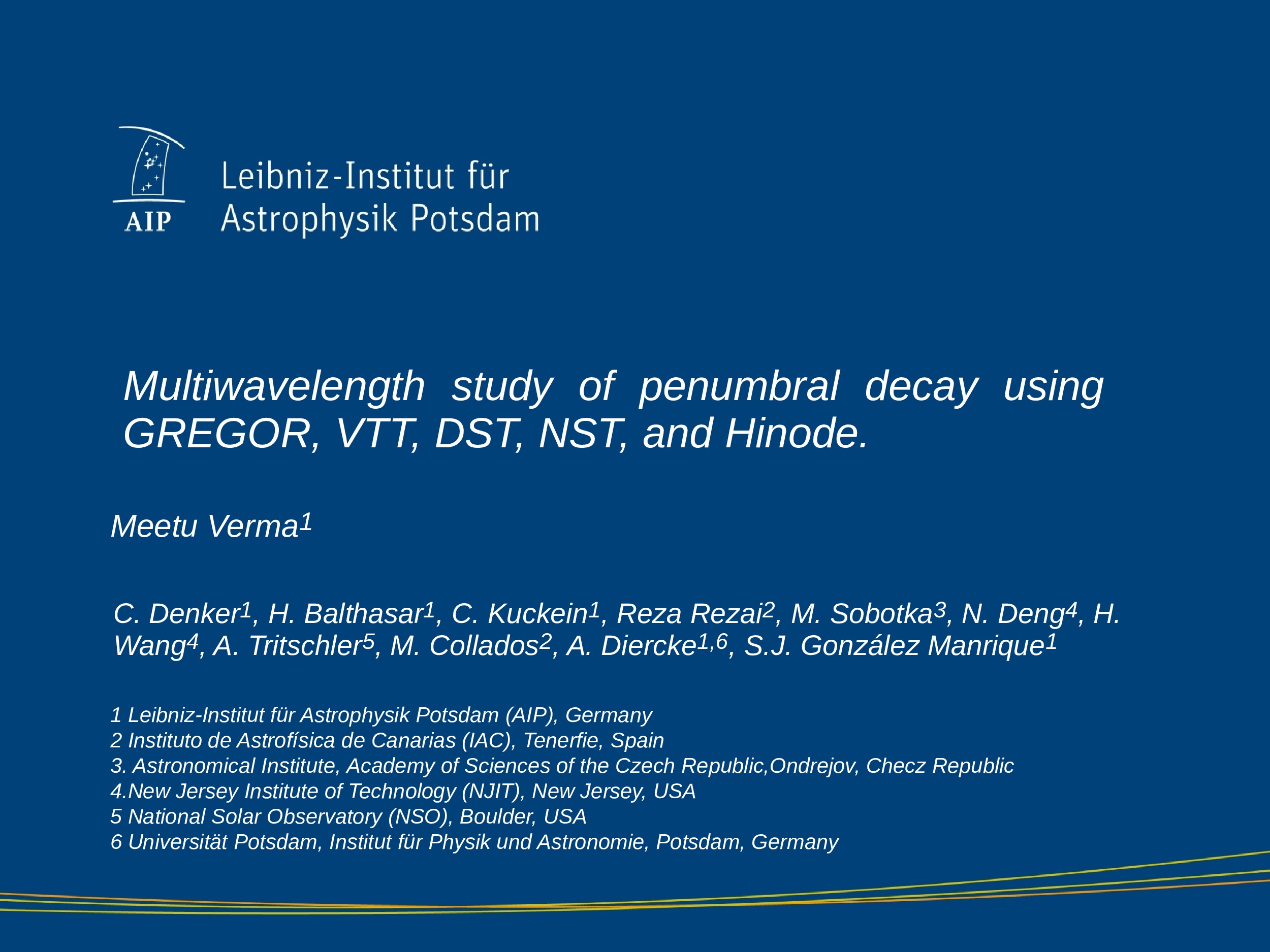Co-author
C. Denker, H. Balthasar, C. Kuckein, Reza Rezai, M. Sobotka, N. Deng, H. Wang, A. Tritschler, M. Collados, A. Diercke, S.J. González Manrique
Affiliation
Leibniz-Institut Fuer Astrophysik Potsdam (AIP)
Main category
Natural Sciences (Astrophysics and Astrononmy)
Abstract
Active region NOAA 12597 emerged on 22 September 2016 in southern hemisphere.
The region was observed two days later on 24 September 2016 with GREGOR, VTT,
NST, and Hinode during a campaign organized as part of the SOLARNET initiative
for coordinated observing campaigns. The leading spot of the region was observed
for the next four days. We obtained high-resolution imaging, spectroscopic, and
spectropolarimetric data in various spectral lines covering the photosphere as
well as the chromosphere. These data were complemented by synoptic line-of-sight
magnetograms and continuum images obtained with the Helioseismic and Magnetic
Imager (HMI) onboard the Solar Dynamics Observatory (SDO) and slit-jaw images
from the Interface Region Imaging Spectrograph (IRIS). We will present the
dataset taken on 24 September 2016 containing the leading spot. The sunspot was
at its maximum growth and slowly started to disintegrate at the time of GREGOR
and VTT observations followed by the observations from Hinode and NST a few
hours later. We will discuss the photospheric and chromospheric flow fields
along with the magnetic fields during the penumbral decay of a large penumbral
sector. The penumbral filaments do not simply vanish but intermingle with the
nearby granules and even temporarily form darkened areas resembling umbral cores
filled with umbral dots.
Do you have problems viewing the pdf-file? Download presentation
here
If the presentation contains inappropriate content, please
report the presentation. You will be redirected to the landing page.
